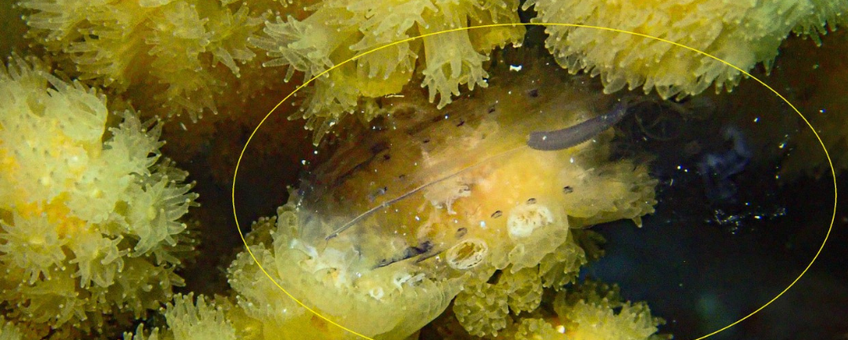
New food source identified for Caribbean corals
Dutch Caribbean Nature Alliance (DCNA), Naturalis Biodiversity Center, University of Amsterdam, University of GroningenSalps, also known as sea grapes, are gelatinous, barrel-shaped tunicates. Multiple salp bodies can link together, creating whole colonies. They are able to move through the water column by utilizing one of the most efficient jet population systems found in the animal kingdom. Previously, fish were thought to be the main predators of salp. However, new information is emerging on predation by corals as well.
Sea grapes
Currently, there is limited information on salpivorous corals available. As salps are relatively large planktonic animals, it was assumed that predation by corals was limited to those with polyps with mouths larger than one centimetre, large enough to engulf an entire salp. However, observations from the Mediterranean have found polyps from smaller mouthed corals working together to digest larger catches, hinting that salp may be an important food source across a wide variety of coral species.
Observations on Curacao
In July 2021, a swarm of these salps were spotted in Curacao’s Director’s Bay. Upon closer inspection, Lars J. V. ter Horst, student at the University of Amsterdam, also found captured salps amongst three different species of hard corals: yellow finger coral (Madracis auretenra), maze coral (Meandrina meandrites), and great star coral (Montastraea cavernosa). He contacted Bert W. Hoeksema at Naturalis and the University of Groningen, who previously published about salpivorous corals in Malaysia and Thailand. They then proceeded to publish a report together. This was important, because this was the first record of yellow finger coral and maze coral as salp predators. In addition, since salp swarms are frequently observed within the Caribbean, these findings hint that these swarms could potentially be a more common and widespread food source for corals than previously thought.

Implications
These findings provide exciting new insight into coral reef ecology and the importance of salp swarms as a food source. As coral reefs continue to face increasing pressures, a more holistic understanding of their dynamic ecosystems will be crucial for conservation management moving forward.
Find out more information by reading the full report on the Dutch Caribbean Biodiversity Database.
Text: Dutch Caribbean Nature Alliance
Photo: Lars J.V. ter Horst
